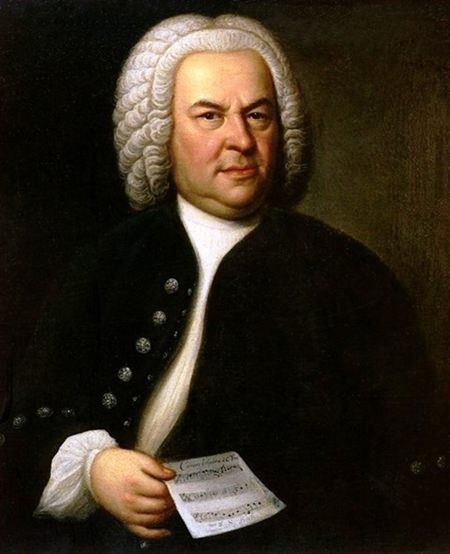
Browsing through my list of musicians’ birthdays recently, I was reminded that 30th March is the birthday of two of the most influential European composers who ever lived. They both wrote a huge amount of music and had an impact on almost every other composer who followed them. I refer to Franz Joseph Haydn, whose name is synonymous with the Classical period and Johann Sebastian Bach, whose name is irrevocably linked with the Baroque. Even today, every serious student of composition studies their music assiduously – especially that of Bach.
The complete Bach catalogue was not published until 1950 and known by its German name, Bach-Werke-Verzeichnis which is why the letters BWV are always added after the title of a Bach work. The catalogue lists over 1,100 titles but it’s likely that he wrote many more which have since been lost. During his lifetime, Bach was known primarily as a virtuoso organist and part of his job was to write the music for church services of all kinds. His fame as a composer didn’t really emerge until the so-called Bach Revival in the nineteenth century. In some ways, his style of writing was typical of the late Baroque but like other individuals who are considered “great” he pushed the boundaries as did no one before him. He had the gift for writing tightly woven textures of rich and complex counterpoint and developed tonality as no one else had done.

Bach’s achievement is staggering by any standards, astonishing in its size and yet replete with masterpieces that stand out like towering peaks in the repertoire. The monumental St. Matthew Passion springs to mind. It’s a massive two-and-a-half hour oratorio recounting the Passion of Jesus as told by Matthew. In contrast, The Well-Tempered Clavier consists of two books, which include a prelude and fugue in every major and minor key, displaying an amazing variety of contrapuntal and fugal techniques. Taking into account well over a thousand works which would take a lifetime to know, it’s impossible to find a representative work which symbolizes Bach’s entire output. Instead, I shall indulge myself and tell you about a set of works which have been close to my heart since my teenage years.
The Brandenburg Concertos are a collection of six instrumental suites which the composer presented to Christian Ludwig, Margrave of Brandenburg-Schwedt in 1721 along with a suitably groveling dedication. They were not especially composed for the Margrave (although Bach may well have wanted to create that impression) but were apparently taken from other works that he’d written over the years.
The sixth concerto is one of my favourites and it’s unusual in that the scoring doesn’t include violins. Instead Bach writes for two violas, cello, double bass, harpsichord and two rather old fashioned instruments known as the viola da gamba. Why Bach chose this unusual combination of instruments is unknown, though plenty of theories abound. The work is a testament to the composer’s incredible contrapuntal technique – the skill of weaving melodies together into a seamless texture. For example, in the bubbling foot-tapping first movement listen to how one viola thematically chases the other a second or two later. In the second movement the gambas don’t play (again another mystery) and the third movement is a jig-like dance. In this movement too, Bach writes complex passages in which the melody is constantly swapped between the solo violas using catchy syncopation which gives the music an incredibly lively rhythm.
No one knows exactly how many symphonies Haydn wrote, probably not even Haydn himself. The number is usually given as 104 or 106 depending on the source but there are likely to be others. I could have chosen any of them as a birthday celebration but Number 104 is special for me because it is the first one I ever played when I was a teenage cellist back in the Old Country.
It’s also the composer’s last symphony and part of a set of twelve intended for performance in London. This four-movement work was written in 1795 while Haydn was living there, and premiered the same year to an enthusiastic audience.
Haydn was fond of opening his symphonies with a slow introduction and this is a grand opening to say the least. He has fun in the third movement in which he puts stresses in the minuet in unexpected places. The finale is dominated by an exuberant folksy melody which is sometimes supported by a bagpipe-like drone accompaniment. The work is a lively introduction to Haydn’s mature musical style and a wonderful example of a late classical symphony.
 |
 |
 |




